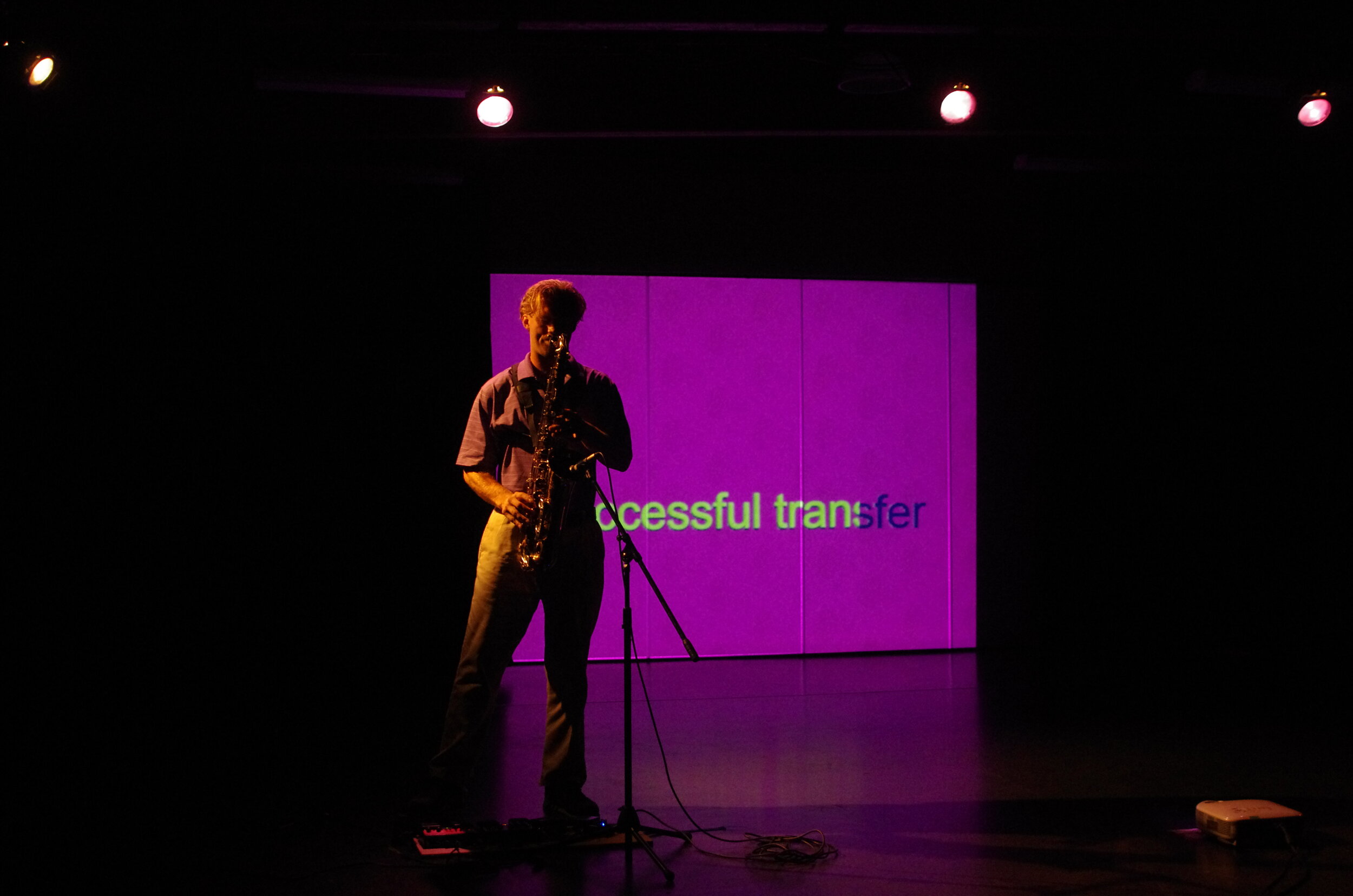That which doesn't go away
THAT WHICH DOESN’T GO AWAY (2016)
created by Dave Biddle and Patrick Blenkarn
performed at Interplay 2016 at the Moberly Arts and Cultural Centre || October 14-15, 2016
15min
//
Interplay Q&A
From: Deanna Peters
To: Patrick Blenkarn, Dave Biddle
Oct, 2016
What’s a wisdom tool? Can you give us an example of how one can be used?
Wisdom tools are fourth dimensional artifacts (thought objects) that have the unique ability to trigger non-thought awareness (NTA) in subjects that find themselves moving through this higher space (4D/thought-space) via perpetual misapprehension caused by the 4D feedback loops (thought spirals). To put it more simply, wisdom tools are geometric forms of thought that collapse the process of thinking. An example of one of these tools performing its own function could be taken from the formal structure of Borges’ Library of Babel, where this structure exemplifies its own randomness, it diffuses any meaning found in the Library‘s literary content, and thus always inserts itself as an obstructive geometric form between the reader and any meaning (ie further investigation into its content) they might find. Hence, the underlying randomness of the Library‘s contents operates as a wisdom tool to prevent its inhabitants from pursuing any thought space coordinates that arise in the Library‘s books, as it collapses the book’s logic, while still occupying the same geometric space as this doomed logic.
When you say restorative physics… restoring what? To what? From what?
Restorative physics refers not to a return to any previous state, as in a restoration of any system of logic in physics that has existed before and has been overtaken by a new (current) one. Nor does it refer to the use of physics as a vehicle of restoration to any previously extant psychological state that has been lost to a new (current) one. Restorative physics refers to the restoration of openness to the closed state of the physical world, which has never existed historically but can be restored via an ahistorical theory of the physical realm, a theory whose language is also physical rather than symbolic. Restorative physics values the physical as a symbol of the mental. A return to the openness of the physical world will perpetuate the presence of symbolic wormholes that act as bridges between the subjective and the objective, and perception can become slippery again.
Can you talk us through a dangerous repetition in your daily life? What is a healthy ritual to you? How can you tell the difference?
A dangerous ritual is one that offers explicit functional value toward a goal made sensible only by a larger framework of logic, displacing its own value in the abstract direction of time indefinitely. A dangerous ritual emerges via a subject’s confidence in the transcendent framework of logic that created the ritual. A healthy ritual can be made out of the many dangerous ones offered to us in public life, by taking their strict functionality and testing its limits. This can range from sending a large sum via email transfer to a stranger with a Zen koan as the security question. Checking your balance at an ATM as many times in a row that there are dollars on it. Or perhaps when an acquaintance asks how you’re doing, try to answer them honestly and comprehensively. Pushing these ritualistic actions to their limits will exceed their function and return the motions and thoughts that they require into performative acts that find sanctuary outside of their original systems of logic.

